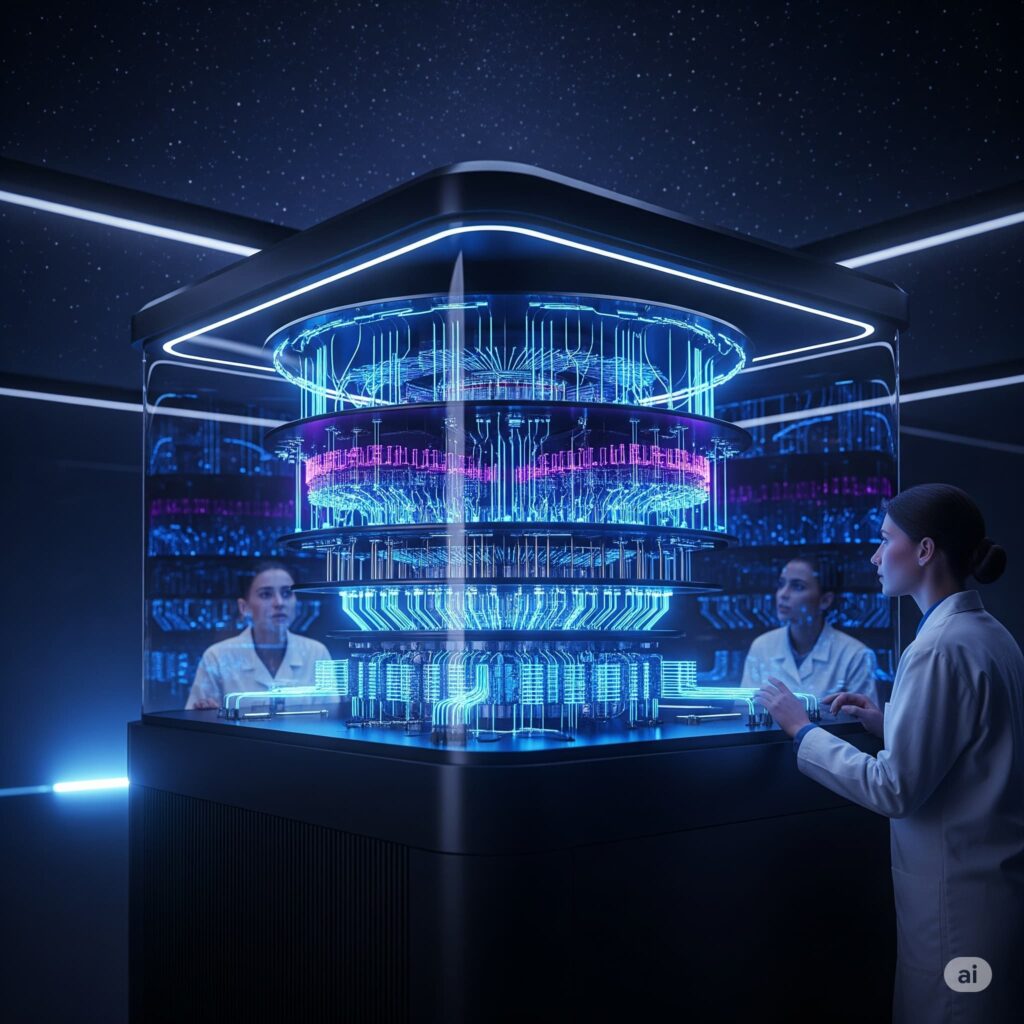
Quantum computers promise to revolutionize fields from medicine to materials science. But these incredibly powerful machines face a significant hurdle: “noise“. Unlike classical bits that are either 0 or 1, qubits – the building blocks of quantum computers – are incredibly fragile. They’re susceptible to errors introduced by environmental interference, leading to inaccurate computations. This is where quantum error correction (QEC) steps in – the unsung hero enabling the development of truly scalable and fault-tolerant quantum computers.
The Delicate Dance of Qubits
Imagine trying to build a towering skyscraper with bricks that constantly shift and crumble. That’s the challenge facing quantum computing. Qubits, utilizing quantum phenomena like superposition and entanglement, are exquisitely sensitive. Even minor fluctuations in temperature, electromagnetic fields, or vibrations can cause them to lose their quantum properties, leading to computation errors. These errors accumulate rapidly, rendering large-scale quantum computations practically impossible without robust error correction.
Classical computers handle errors using redundancy – multiple copies of data ensure that even if one bit flips, the correct information is preserved. However, this simple approach doesn’t work for qubits. Directly copying a qubit destroys its quantum state, a phenomenon known as the “no-cloning theorem.” This fundamental limitation necessitates a more sophisticated approach: quantum error correction.
How Quantum Error Correction Works: Encoding and Decoding Reality
QEC employs clever encoding schemes to protect quantum information. Instead of directly storing a single qubit, the information is spread across multiple physical qubits, creating a logical qubit. This logical qubit is designed to be resilient to certain types of errors. If one of the physical qubits experiences an error, the error can be detected and corrected without losing the overall encoded information.
Several QEC codes exist, each with its strengths and weaknesses. Some prominent examples include:
- Stabilizer codes: These are a broad class of codes that use a set of stabilizer generators to define the code space and detect errors. The surface code, a particularly important stabilizer code, is widely considered a leading candidate for fault-tolerant quantum computation.
- Topological codes: These codes leverage the topological properties of the system to protect information. They are inherently robust against certain types of noise, making them attractive for long-term storage of quantum information.
- Quantum Low-Density Parity-Check (LDPC) codes: These codes are inspired by classical LDPC codes and are known for their good performance and relatively efficient decoding algorithms.
The process involves:
1. Encoding: The delicate quantum information is encoded into a larger, redundant system of physical qubits forming the logical qubit.
2. Error Detection: Regular measurements are performed on the system to detect errors without disturbing the encoded information. These measurements provide a syndrome, a set of values indicating the location and type of error.
3. Error Correction: Based on the syndrome, a quantum algorithm corrects the error by applying appropriate quantum gates to the physical qubits.
4. Decoding: Once the computation is complete, the encoded information is decoded to retrieve the final result.
The Overhead Challenge: More Qubits, More Problems (and Solutions)?
While QEC is crucial for scalability, it comes with a significant overhead. Protecting a single logical qubit often requires many physical qubits. This overhead increases the complexity and cost of building quantum computers. The ratio of physical qubits to logical qubits is a key figure of merit, and reducing this overhead is a major area of ongoing research. Researchers are exploring new coding techniques, improved decoding algorithms, and novel qubit architectures to minimize this overhead.
Practical Considerations and Future Directions
The practical implementation of QEC faces several challenges:
- Qubit coherence: Maintaining the coherence of qubits for the duration of error correction is crucial. Longer coherence times are essential for more complex computations.
- Measurement fidelity: The accuracy of the measurements used to detect errors directly impacts the effectiveness of QEC. High-fidelity measurements are vital.
- Gate fidelity: The accuracy of quantum gates used for error correction is also critical. High-fidelity gates are necessary to minimize the introduction of new errors during the correction process.
Despite these challenges, significant progress is being made. Researchers are actively developing new QEC codes, improving error detection and correction techniques, and exploring novel qubit platforms with inherently better coherence properties. The development of fault-tolerant quantum computers is a complex endeavor, but QEC is a critical component in making this vision a reality.
In conclusion, quantum error correction is far from a mere technical detail; it’s the backbone of scalable quantum computation. Overcoming the challenges posed by qubit fragility is essential for unleashing the transformative power of quantum computers. While significant hurdles remain, the ongoing research and development in QEC offer a promising path towards a future where fault-tolerant quantum computers are a reality, unlocking unprecedented computational capabilities.